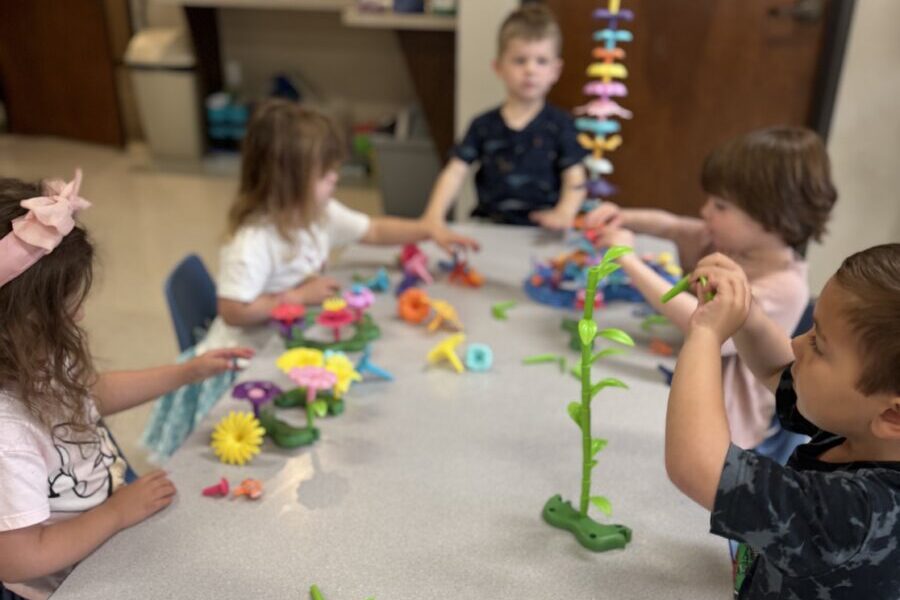Building Tomorrow’s Learners: Your Toddler’s Classroom Journey
The morning rush is familiar to every parent: your energetic two-year-old bounces from toy to snack to book within minutes, while you wonder how they’ll ever sit still for circle time. Recent studies from the National Association for the Education of Young Children show that children who experience structured pre-learning environments demonstrate 40% better school readiness scores by kindergarten. This transition to classroom structure isn’t just about following rules—it’s about building the foundation for your child’s entire educational journey. Many parents worry whether their free-spirited toddlers will adapt to the expectations of a learning environment. These concerns are completely natural and shared by families everywhere.
At Castle Creek Christian Academy, we’ve guided hundreds of families through this important developmental milestone, understanding that each child’s path to structured learning is unique and deeply personal. The beauty of early childhood development lies in how naturally toddlers can adapt when given the right support and environment. Your child’s curiosity and energy aren’t obstacles to overcome—they’re incredible assets that, when properly channeled, become the driving force behind successful learning experiences.

Understanding Your Toddler’s Developmental Readiness
Between ages 18 months and three years, children experience remarkable cognitive growth that makes classroom structure not only possible but beneficial. Their brains are developing executive function skills, which include the ability to focus attention, follow simple instructions, and begin self-regulation. These neurological changes mean your toddler is naturally becoming more capable of participating in group activities and structured play.
The key is recognizing that readiness doesn’t mean perfection. A child who can sit for a five-minute story today might struggle tomorrow, and that’s completely normal. Developmental readiness is about building capacity gradually, much like strengthening a muscle through consistent, gentle exercise.
Research from Harvard’s Center on the Developing Child emphasizes that responsive relationships during this period create the neural pathways that support later academic success. When we introduce structure through warm, consistent interactions, we’re literally helping build your child’s learning brain.
Creating Structure That Supports Natural Development
Effective classroom structure for toddlers looks quite different from what you might imagine. Instead of rigid schedules and silent work time, quality early learning environments create predictable routines that honor your child’s need for movement, exploration, and social connection.
Morning routines become anchors that help children feel secure and confident. Simple sequences like hanging up backpacks, washing hands, and choosing morning activities give toddlers a sense of control within structure. These seemingly small rituals teach time concepts, following directions, and personal responsibility without feeling like formal instruction.
Building Social-Emotional Skills Through Group Experiences
The transition to classroom structure offers unique opportunities for developing crucial social-emotional skills. Sharing materials, taking turns during activities, and navigating friendship dynamics all happen naturally within a well-designed learning environment. These experiences teach empathy, patience, and communication skills that serve children throughout their educational journey.
Group activities like singing songs, playing simple games, and collaborative art projects help toddlers understand that learning can be both fun and social. They begin to see themselves as part of a learning community, which builds confidence and enthusiasm for school experiences.
Preparing Your Home Environment
You can support your child’s transition by incorporating gentle structure into your daily routines at home. Consistent meal times, regular bedtime routines, and designated spaces for different activities help reinforce the concept that different times and places have different expectations.
Reading together daily, even for just ten minutes, builds attention span and creates positive associations with learning activities. Encouraging your child to help with simple household tasks teaches following directions and completing activities from start to finish.
Supporting Your Child’s Unique Timeline
Every child approaches classroom structure differently, and honoring your child’s individual temperament makes the transition smoother for everyone. Some children thrive on routine immediately, while others need more time to adjust to group expectations. Both responses are completely normal and don’t predict future academic success.
Children who seem to resist structure often benefit from extra time to observe before participating. Others might need movement breaks or sensory supports to feel comfortable in group settings. Quality early learning programs recognize these differences and adapt their approaches accordingly.
At Castle Creek Christian Academy, we understand that every family’s path is unique. Our experienced educators work closely with parents to ensure each child receives the individualized support they need during this important transition. We’d love to discuss how our nurturing learning environment can support your child’s growth and development. Contact us today to schedule a visit and discover how we can support your family’s unique needs and goals.
